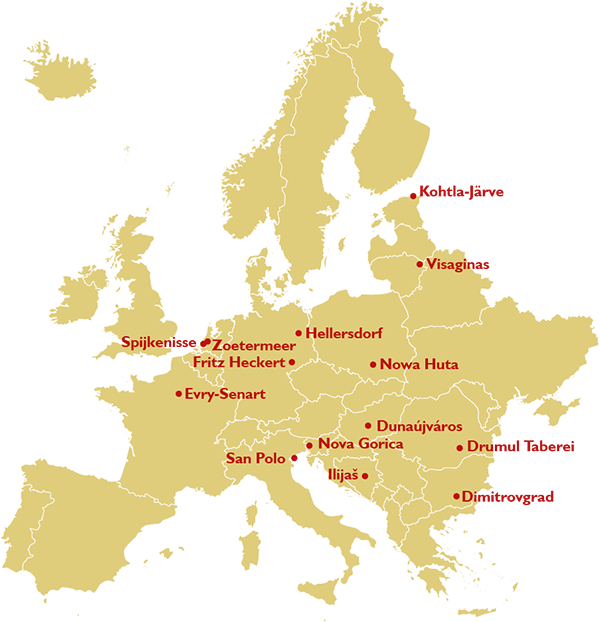In 1949 construction of Nowa Huta began in typical Soviet realist-stalinist fashion. Nowa Huta was to be an idealist socialist city, similar to Dunaújváros, with a radial layout based around a central square. The city’s steel plant was at the epicentre of the town’s development plans. In its heyday the plant employed 40,000 workers, producing 7 million tonnes of steel. The core was designed within a semicircular shape with a central pentagonal square on the south side, where the five directions of Nova Huta’s streets meet. Each district was intended for 20,000 inhabitants, divided into neighbourhoods of 2-5,000 inhabitants. Initially buildings were built traditionally, but in 1954 prefabrication was introduced.
The 1950 masterplan allowed for a population of 100,000. In 1978 the population was 278,000. Housing supply failed to meet demand and many people were placed in worker’s hotels. Despite many buildings being of poor quality, the housing crisis did not permit reconstruction. Today Nowa Huta is less reliant on the steel mill, instead it is transforming itself through tourism and housing renovations. However, these new trajectories are not without controversy. New housing estates are not inclusive or affordable and have an effect on the old estates. Since the industrial plants are ending their operation, nature is taking over in post-industrial areas. The challenge of environmental pollution and its impact on local residents remains. Nowa Huta has an interesting and in some aspects heroic history, but the stories of the inhabitants have been insufficiently collected in the oral archives. Presently, there’s an influx of newcomers (e.g. war refugees), but who are they? Little knowledge exists on these new groups of inhabitants and how they can feel at home in Nowa Huta.
Representative Organisation:
The Norwid Culture Center





